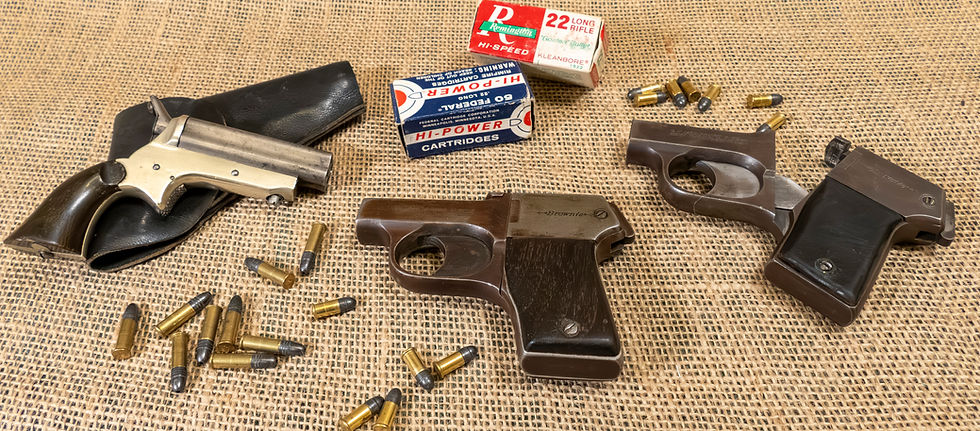Legacy of the little Colts that could
- kb5947
- Sep 5
- 3 min read
These reliable, powerful backups remain at the ready

A few weeks ago, we highlighted one of the first official police-issue guns, the Colt Army Special. Here are some of its younger, tougher, stubbier cousins–always ready as a backup.
Colt snub-nosed revolvers have a long history, but their modern popularity is all about the mid- to late-20th Century. It literally ended there, with Colt ceasing production of all its revolvers in 2000–except the Python–as semi-automatics dominated the market.
For Colt, that evolution is all about the Detective Special, one of the earliest double-action, .38 Special, pistols with a 2-inch barrel,”positive-lock” safety, and the convenient swing-out cylinder and short, shrouded ejector rod.
Colt collectors will be sticklers on the evolution, here, so let’s use some short, clear sentences to set the law enforcement models straight from the get-go.
The Colt Army Special, which we highlighted a few weeks ago, debuted with a heavy medium frame designed for shooting the .38 Special and was later rebranded as the Colt Official Police, because it fell flat with the U.S. Army, but law enforcement officers loved it.
The Colt Police Positive debuted as its lighter “D frame” brother, initially chambered for .32 Colt Police. Colt stretched the D frame, gave it a longer cylinder to accommodate .38 Special, and it became the Police Positive Special.

According to collectors conversing in the Colt Forum in January 2021, with letters from Colt to support their claims, around 1925 or 1926, the Detroit Police Department requested Police Positive Specials with a shorter barrel. Colt obliged with some batches of Police Positives with a 2-inch barrel.
Collectors sometimes refer to these limited-run pistols–marked only with “.38 Special” stamped into the barrel– as “pre-Detective Specials.”
Collectors say the guns are sometimes mislabeled as Detective Specials, but are, accurately, a rare, limited production of Police Positive Specials with 2-inch barrels.
The new “snub-nosed” revolvers were a hit, apparently, and in 1927, Colt issued its first full-production run of the .38 Caliber Colt Detective Special, and it had a strong run until production ended in 1995.
If anyone out there has a grandpa or great-grandpa who was in law enforcement, chances are he hit the streets with a 4- or 6-inch Police Positive Special on his hip and a Detective Special in his pocket or strapped in an ankle holster.

Hollywood picked the Detective Special as a favorite, from Peter Lorre’s character, Ugarte, in Casablanca in 1942, to Sean Connery’s 1966 James Bond, in You Only Live Twice, and as a standard issue to cops in 1997’s film noir throwback, L.A. Confidential.
It also appeared in popular television shows, as late as with Tom Selleck in Blue Bloods, and was regularly and lethally used in “The Walking Dead.”
As its popularity and demand for concealed carry increased, the Detective Special spawned three more generations with various options, in addition to other “pony” models, as well as a snake that lives on to this day.

The favored D-frame made in an even lighter-weight aluminum alloy gave rise to several versions of the snub-nosed revolver, the most popular being the Cobra, at 15 ounces compared to the Detective Special’s 21, in 1950. Colt revived the Cobra, at least in name, in 2017 and continues to this day. It is a heavier, stainless model with improved mechanisms and capable of firing overpressure (+P) rounds.
The Lawman Mk III .357 magnum debuted in 1969 and lasted to 1983. It was available in several finishes, including blued, nickel, and stainless, and offered in 2-inch and 4-inch barrel lengths.
It could be considered a hybrid of Colt’s efforts to manage power with weight.
It’s more of a throwback to the target version of the heavier-framed Official Police called the Trooper.
In all honesty, it’s likely more a reflection of Colt’s efforts to compete against the extremely popular Smith & Wesson K-frame.
Still, like Colt’s other snubs, people who find these heavy snub-nosed .357s today praise their feel, even in larger hands, a smooth action, along with accuracy, tolerable recoil, and durability.




Comments